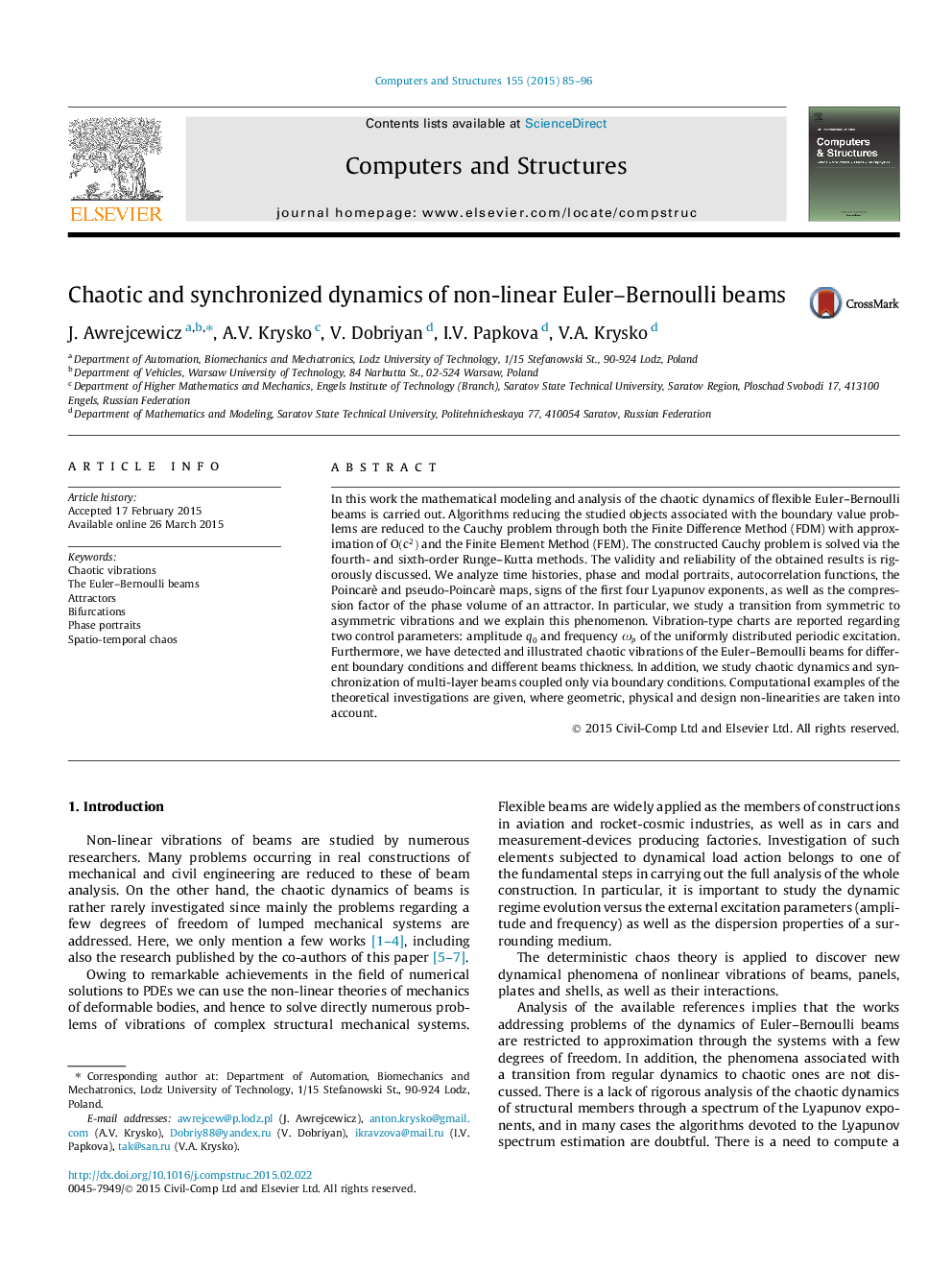| Article ID | Journal | Published Year | Pages | File Type |
|---|---|---|---|---|
| 509960 | Computers & Structures | 2015 | 12 Pages |
In this work the mathematical modeling and analysis of the chaotic dynamics of flexible Euler–Bernoulli beams is carried out. Algorithms reducing the studied objects associated with the boundary value problems are reduced to the Cauchy problem through both the Finite Difference Method (FDM) with approximation of O(c2)O(c2) and the Finite Element Method (FEM). The constructed Cauchy problem is solved via the fourth- and sixth-order Runge–Kutta methods. The validity and reliability of the obtained results is rigorously discussed. We analyze time histories, phase and modal portraits, autocorrelation functions, the Poincarè and pseudo-Poincarè maps, signs of the first four Lyapunov exponents, as well as the compression factor of the phase volume of an attractor. In particular, we study a transition from symmetric to asymmetric vibrations and we explain this phenomenon. Vibration-type charts are reported regarding two control parameters: amplitude q0q0 and frequency ωpωp of the uniformly distributed periodic excitation. Furthermore, we have detected and illustrated chaotic vibrations of the Euler–Bernoulli beams for different boundary conditions and different beams thickness. In addition, we study chaotic dynamics and synchronization of multi-layer beams coupled only via boundary conditions. Computational examples of the theoretical investigations are given, where geometric, physical and design non-linearities are taken into account.
